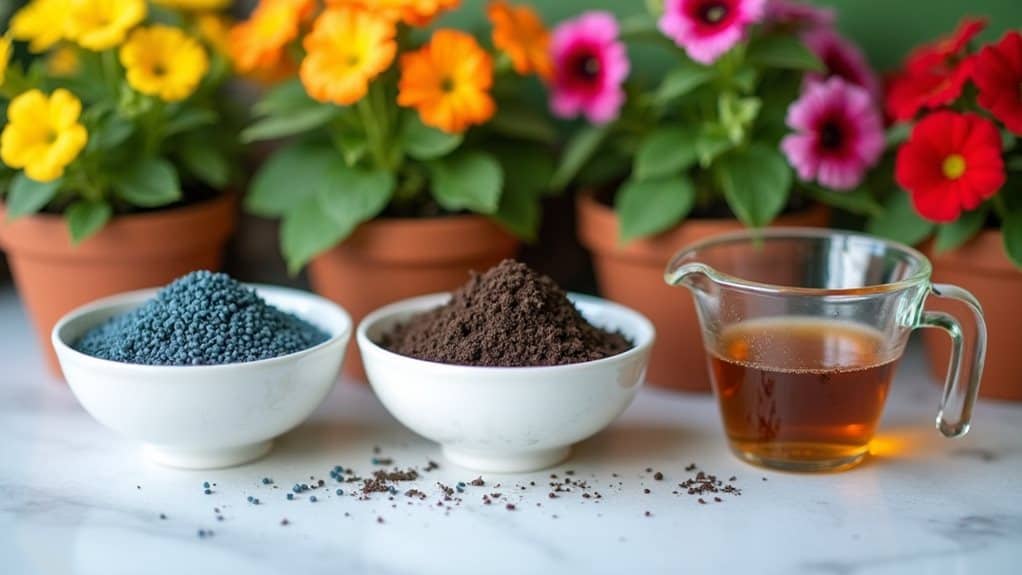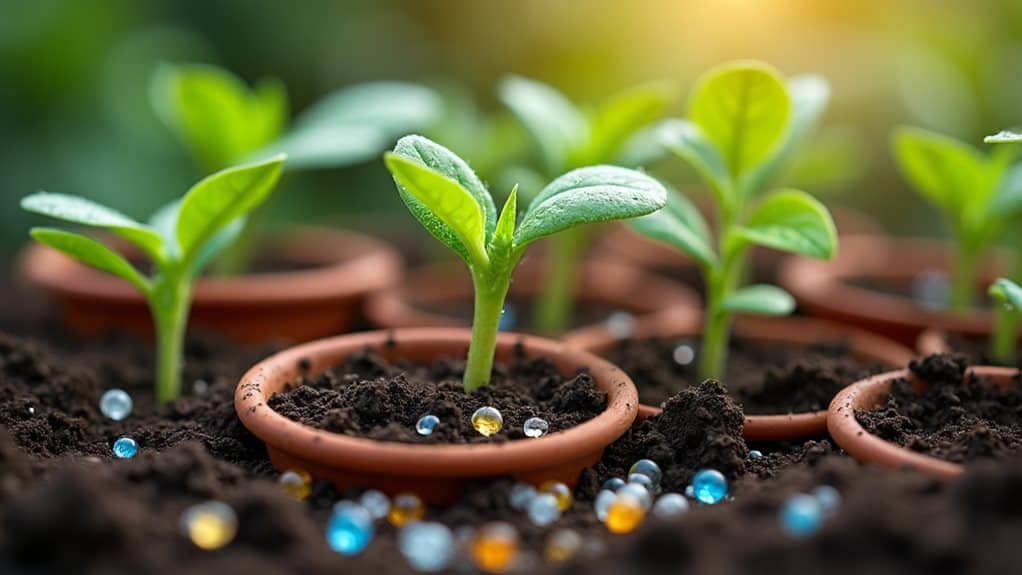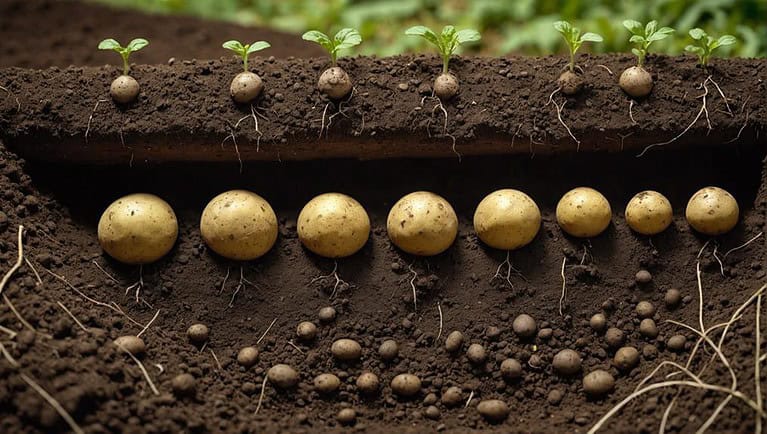Fertilizers for Container Gardening: What to Use
You’ll want to choose water-soluble fertilizers for quick nutrient delivery or slow-release granules that feed your container plants for months without constant attention. Start feeding seedlings 2-6 weeks after sowing, but transplants need nutrients immediately since they’re already stressed from moving homes. Focus on balanced fertilizers with nitrogen for leafy growth, phosphorus for strong roots, and potassium for disease resistance—your container plants will reward you with incredible harvests when you perfect these fundamentals.
Quick Guide
- Water-soluble fertilizers provide quick nutrient delivery, while slow-release granules offer steady feeding for several months in containers.
- Choose fertilizers with balanced nitrogen, phosphorus, and potassium plus essential micronutrients like iron and zinc for optimal plant health.
- Liquid fertilizers applied every 2 weeks allow flexible nutrient adjustments; most vegetables need monthly feeding except tomatoes requiring weekly.
- High-potassium fertilizers boost fruit production, while nitrogen-rich options promote leafy growth in container plants.
- Container size and material affect fertilizer needs—terra cotta requires more frequent feeding than plastic containers.
Types of Fertilizers Best Suited for Container Plants

The world of container gardening fertilizers might seem overwhelming at first, but once you understand the main types available, you’ll be mixing and matching nutrients like a pro chef seasoning their signature dish!
You’ve got water-soluble fertilizers that dissolve instantly for quick fixes, slow-release granules that feed steadily for months, and specialized blends targeting specific plants. Liquid fertilizers are typically applied every 2 weeks and offer the flexibility to adjust application based on your plant’s specific needs. Understanding nutrient composition is key to ensuring your container plants receive the right balance of essential elements for optimal growth.
Understanding Nutrient Requirements and Feeding Schedules
Why does knowing when and how much to feed your container plants feel like trying to decode a secret gardening language?
Start feeding seedlings 2-6 weeks after sowing, but transplants need nutrients immediately. Healthy soil is crucial for optimal nutrient uptake in container gardening.
Monthly feeding works for most vegetables, though tomatoes demand weekly attention.
Always check if your potting mix already contains fertilizer first!
Slow-release fertilizers provide gradual nutrient supply without the risk of burning delicate roots in confined container spaces.
Essential Macronutrients and Micronutrients for Healthy Growth

Just like packing the right gear for your camping excursions, understanding what nutrients your container plants need will make the difference between thriving green companions and disappointing garden failures!
Your plants crave nitrogen for leafy growth, phosphorus for strong roots, and potassium for disease resistance—plus essential micronutrients like iron and zinc for peak health. Additionally, using a high-potassium fertilizer can significantly enhance fruit production in container gardening.
Proper Application Methods for Different Fertilizer Forms
Now that you know exactly what nutrients your container plants are hungry for, applying those fertilizers correctly becomes your next camping skill to conquer—and trust me, getting this right is like knowing how to properly set up your tent before a storm hits!
You’ve got several smart methods: broadcasting granular fertilizer into your container’s top 3-6 inches, creating targeted fertilizer bands near roots, mixing starter solutions for transplants, or side-dressing established plants.
Container Size and Material Considerations for Fertilizer Success

While choosing the right fertilizer application method feels like perfecting your camp stove technique, understanding how your container’s size and material affect fertilizer success is like learning which sleeping bag works best in different weather conditions—it’s absolutely essential for getting the results you want!
Your container’s volume determines fertilizer quantity, while materials like terra cotta need more frequent feeding than plastic containers.
Wrapping Up
You’ve got all the tools now to turn your container garden into a thriving oasis that’ll make your neighbors green with envy! Remember, you’re not just feeding plants—you’re creating your own little ecosystem that could feed you on future camping excursions. Start with balanced fertilizers, watch your plants’ reactions, and don’t be afraid to adjust as you go, because every gardener learns through delicious trial and error!




